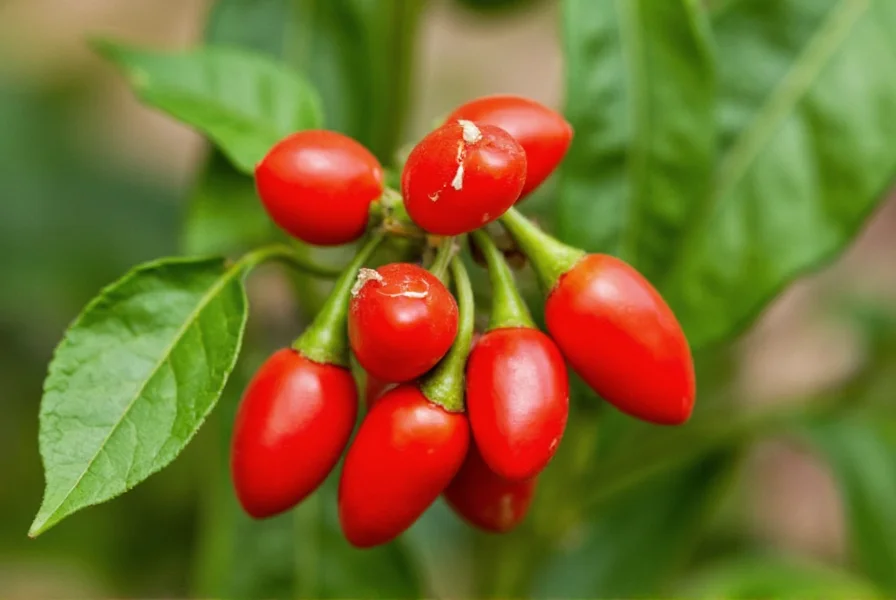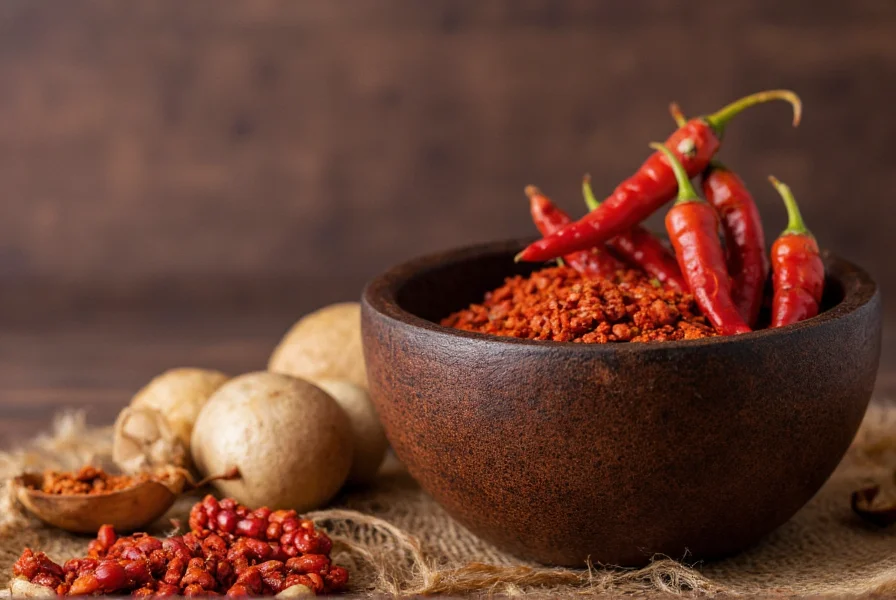The pequin pepper, often called chiltepin in its native regions, represents one of the oldest domesticated chili varieties in the Americas. This diminutive but potent pepper has been cultivated for thousands of years, playing a significant role in traditional Mexican cuisine and folk medicine. Understanding its unique characteristics helps home cooks and culinary professionals incorporate this fiery ingredient effectively.
Origin and Historical Significance
Native to the Chihuahuan Desert region spanning northern Mexico and southern Texas, pequin peppers grow wild in their natural habitat, often dispersed by birds that aren't affected by capsaicin. Archaeological evidence suggests humans have been using these peppers since at least 6000 BCE. The name "pequin" derives from the Spanish phrase "pico de pájaro" (bird's beak), though this term is sometimes confused with Asian bird's eye chilies.

Physical Characteristics and Maturation Process
Pequin peppers measure approximately 0.2-0.4 inches in diameter with an oval to round shape. They grow upright on the plant rather than hanging down like many other chili varieties. The maturation process follows this pattern:
| Stage | Color | Flavor Profile | Common Usage |
|---|---|---|---|
| Immature | Green | Grassy, vegetal notes | Rarely used fresh |
| Maturing | Yellow-orange | Developing fruitiness | Specialty fresh applications |
| Mature | Bright red | Full smoky, fruity heat | Fresh or dried for most recipes |
| Dried | Deep red to brown | Concentrated, complex heat | Traditional preparation method |
Heat Level and Flavor Profile Analysis
With a Scoville rating of 30,000-60,000 units, pequin peppers sit between serrano and habanero peppers on the heat scale—significantly hotter than jalapeños (2,500-8,000 SHU) but milder than ghost peppers (855,000-1,041,427 SHU). What distinguishes pequin from other hot peppers is its complex flavor profile featuring:
- Initial bright, citrusy fruitiness
- Developing smoky undertones
- Floral notes when fully matured
- Distinctive delayed heat that builds gradually
This flavor complexity makes pequin peppers particularly valuable in authentic Mexican dishes where heat serves as enhancement rather than the primary focus. When dried, their flavor concentrates and develops additional earthy notes that work exceptionally well in mole sauces and adobo preparations.
Culinary Applications and Traditional Uses
Chefs seeking authentic Mexican flavors consider pequin peppers essential for traditional recipes. Unlike many hot peppers used primarily for heat, pequin contributes significant flavor dimension. Common culinary applications include:
- Mole sauces - Particularly Oaxacan moles where pequin's fruitiness balances chocolate
- Adobo preparations - Blended with vinegar, garlic, and spices for meat marinades
- Salsas - Used sparingly in roasted tomato or tomatillo salsas
- Preserved peppers - Pickled in vinegar with spices for condiments
- Dried seasoning - Ground into "pique" seasoning blends
When cooking with fresh pequin peppers, experienced chefs recommend wearing gloves due to their intense capsaicin content. The seeds and inner membranes contain the highest concentration of heat, so removing these reduces intensity while preserving flavor.

Pequin vs. Similar Chili Varieties
Many confuse pequin peppers with other small hot chilies. Understanding these distinctions helps in proper substitution:
- Pequin vs. Bird's Eye Chili: While both are small, bird's eye chilies (common in Southeast Asia) have a sharper, more immediate heat (50,000-100,000 SHU) without pequin's fruitiness
- Pequin vs. Tabasco: Tabasco peppers (30,000-50,000 SHU) are longer and more tapered with a vinegar-forward flavor profile
- Pequin vs. Thai Dragon: Thai Dragon peppers have similar heat but lack the smoky complexity of properly dried pequin
- Pequin vs. Chiltepin: True chiltepin refers to the wild variety, while pequin typically denotes cultivated versions with slightly larger fruit
Growing Pequin Peppers Successfully
Gardeners interested in cultivating pequin peppers should note their specific requirements:
- Require 80-100 days to maturity from transplant
- Prefer well-draining soil with pH 6.0-7.0
- Need full sun exposure (6-8 hours daily)
- Thrives in hot, dry conditions similar to native habitat
- Plants typically reach 18-24 inches in height
- Produces abundant small peppers that ripen from green to red
For gardeners in cooler climates, growing pequin peppers in containers allows moving plants indoors during temperature drops. The plants' small size makes them suitable for container gardening, though they require consistent watering during fruit set.
Storage and Preservation Techniques
Proper preservation maintains pequin peppers' distinctive flavor. Recommended methods include:
- Drying: Traditional method where peppers are strung on thread (ristras) and air-dried, concentrating flavors
- Freezing: Whole peppers freeze well for 6-8 months without texture loss
- Vinegar preservation: Creates flavorful pickled peppers for condiments
- Oil infusion: Preserves flavor while creating versatile cooking oil
Dried pequin peppers maintain quality for 1-2 years when stored in airtight containers away from light. Their small size makes them particularly well-suited for grinding into fine powders for seasoning blends.
Substituting Pequin Peppers in Recipes
When authentic pequin peppers aren't available, consider these substitution guidelines based on recipe requirements:
- For heat only: Use cayenne pepper (adjusting for higher heat level)
- For heat and fruitiness: Combine serrano peppers with a touch of smoked paprika
- For dried applications: Mix chipotle powder with a small amount of cayenne
- For traditional Mexican dishes: Use a combination of arbol and guajillo peppers
Remember that substitutions never perfectly replicate pequin's unique flavor profile, but these combinations approximate different aspects depending on your recipe's needs. When substituting, always start with less heat than you think you need—you can add more, but you can't remove excess heat.











 浙公网安备
33010002000092号
浙公网安备
33010002000092号 浙B2-20120091-4
浙B2-20120091-4